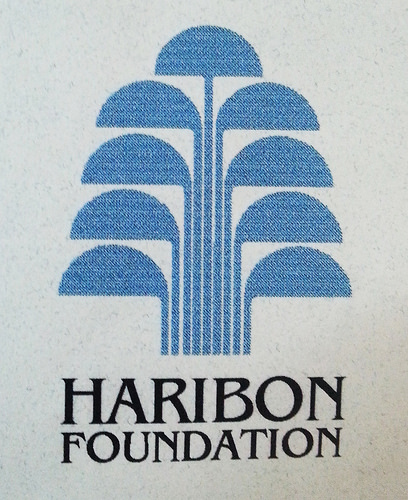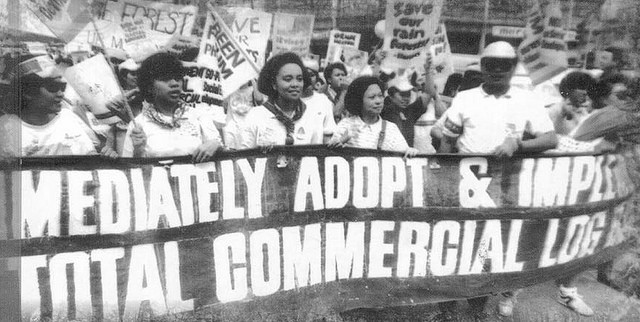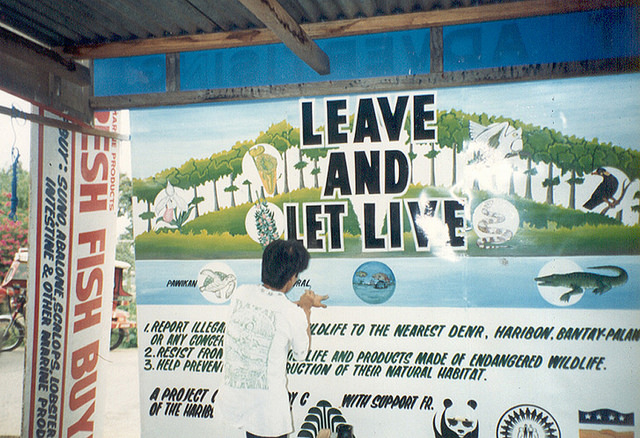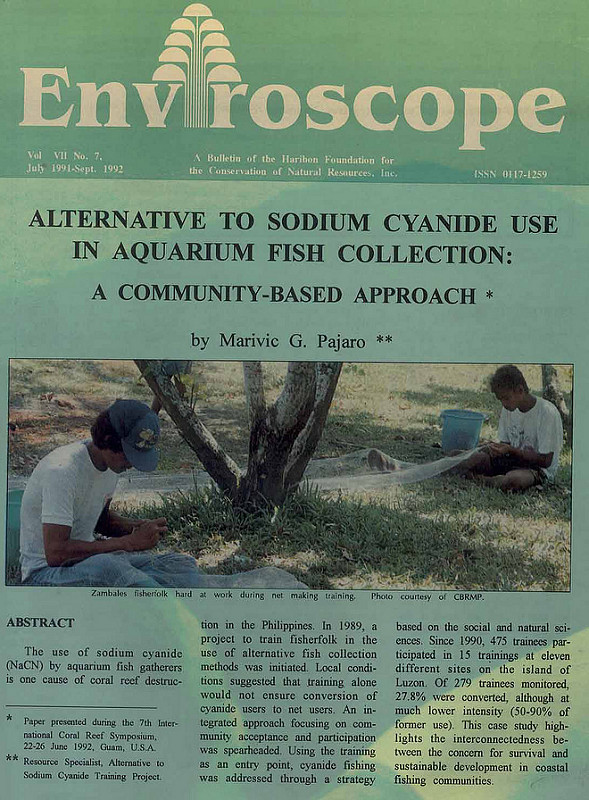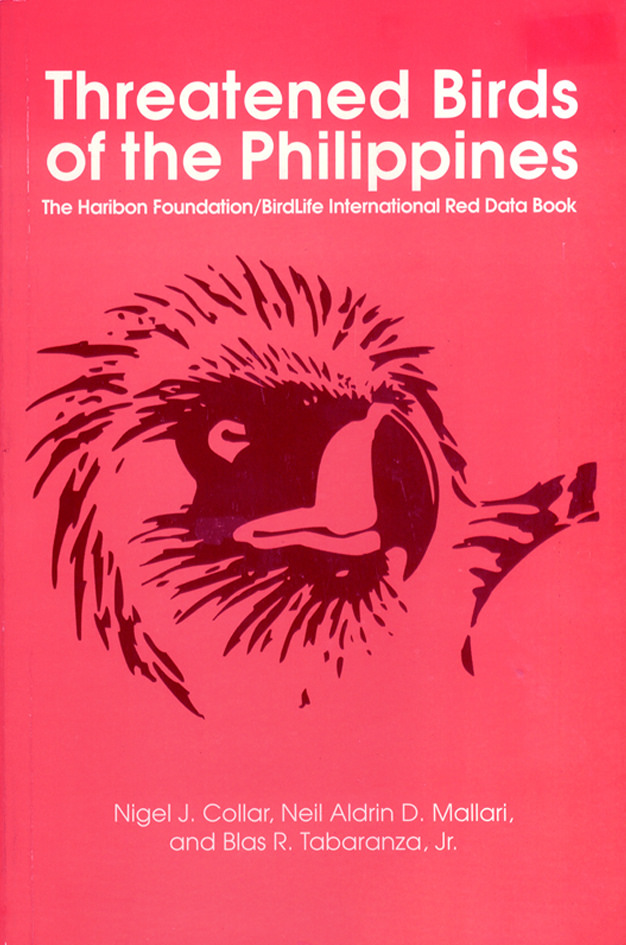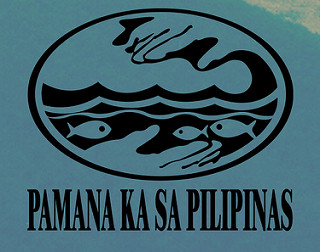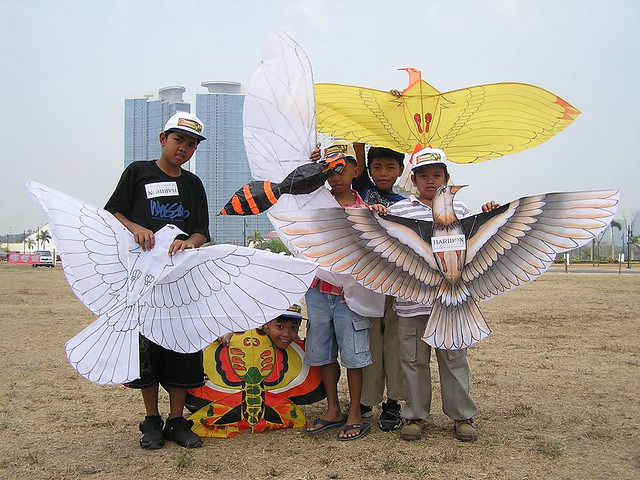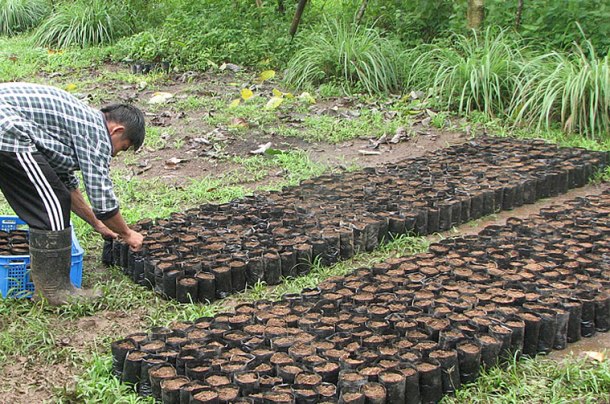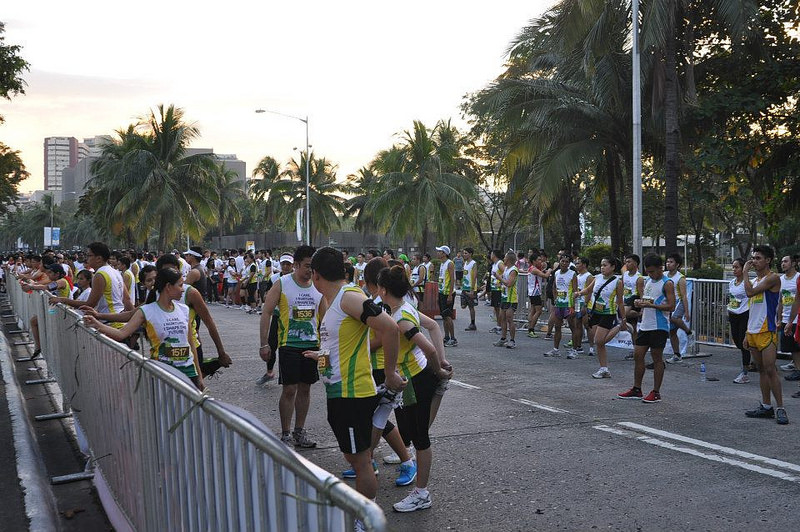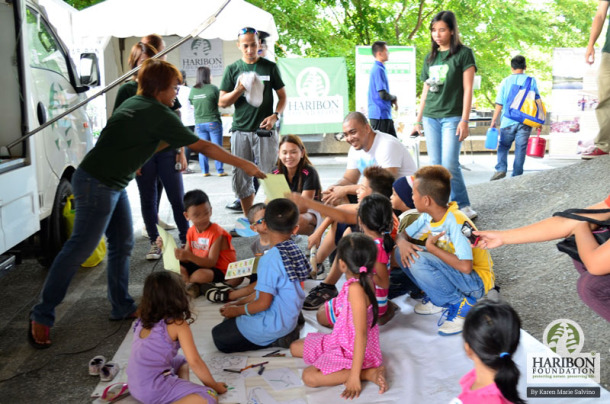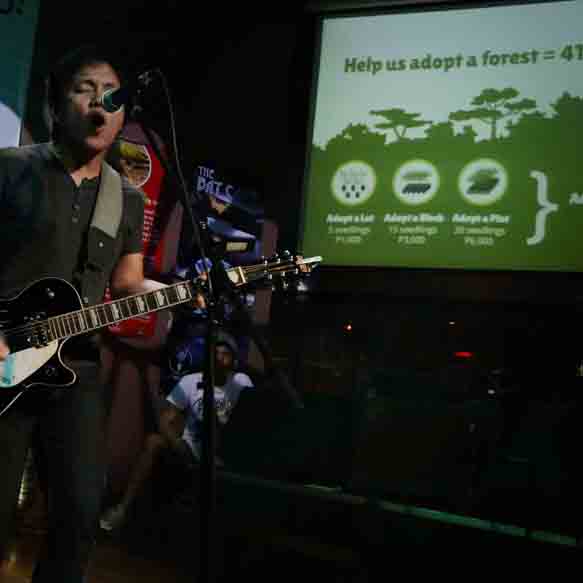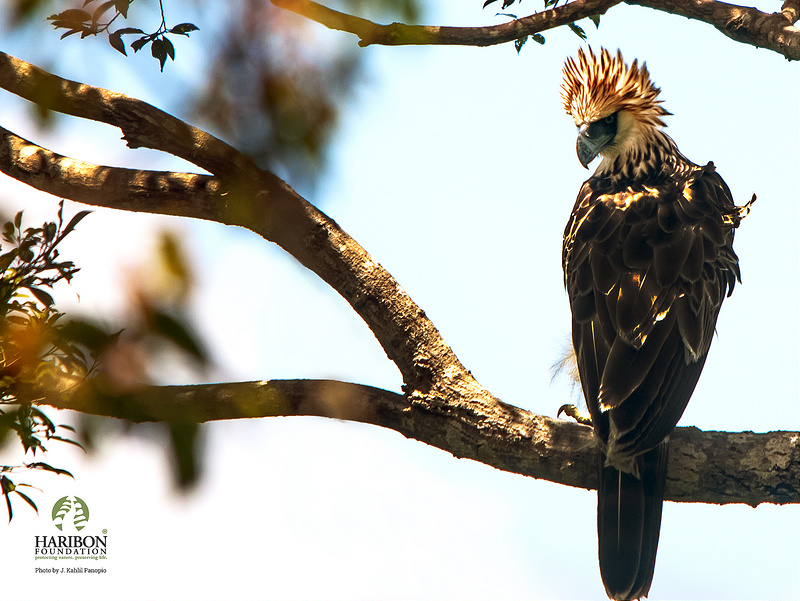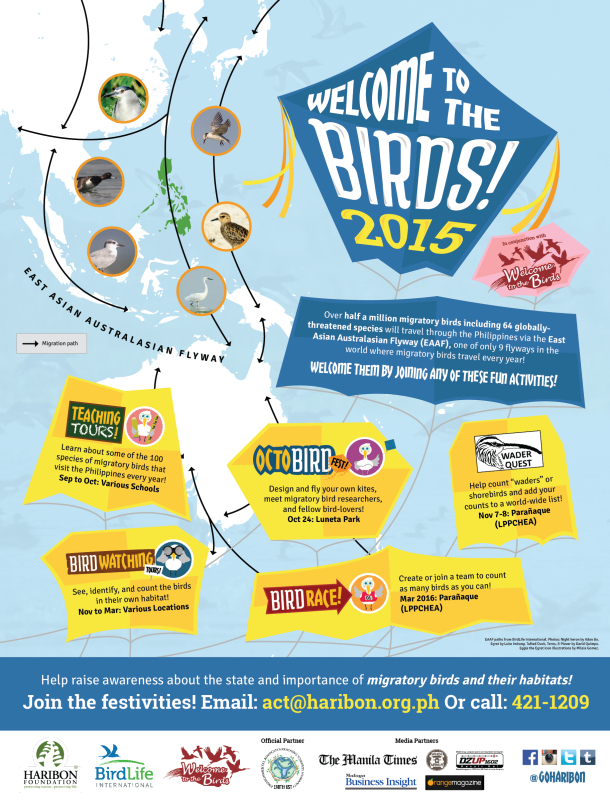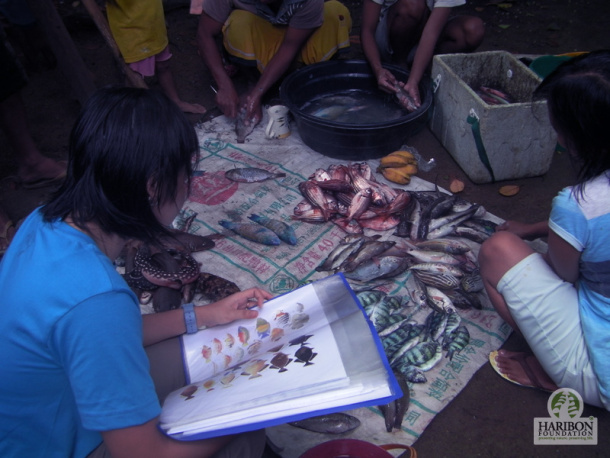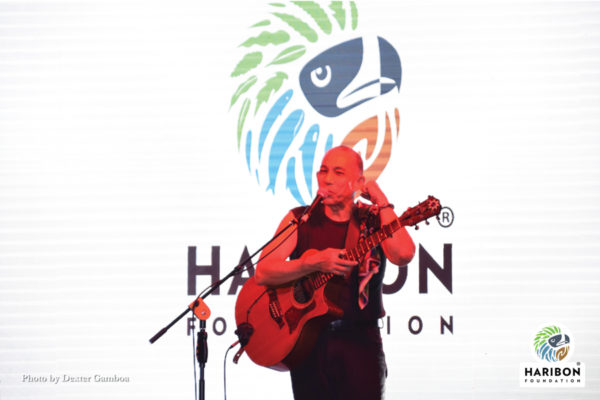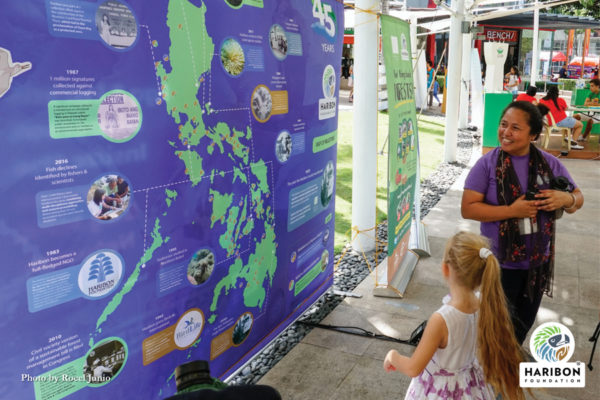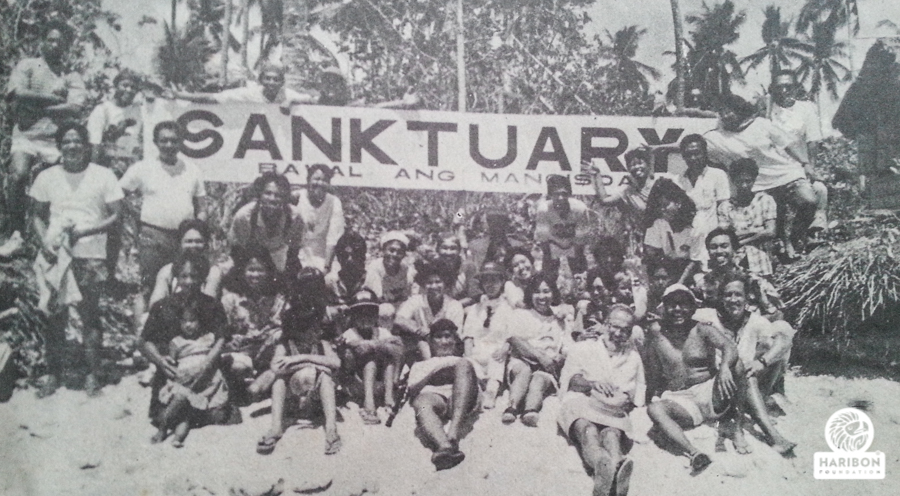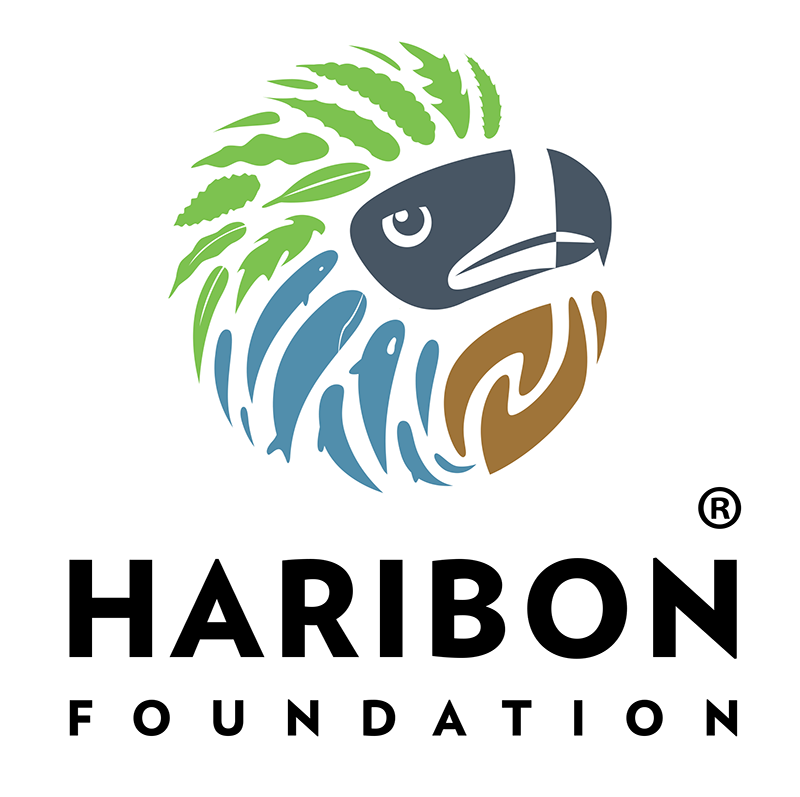1972 to 2019: 46 years of Struggle for the Environment
Haribon is the Philippines’ pioneer environmental organization. Hatched in 1972, the organization, and the individuals it trained and nurtured were instrumental in the formation of other environmental organizations in the country, giving birth to the Philippine environmental movement as a whole. What follows is a brief overview of Haribon’s work over the years. Get to know a history of Philippine conservation below.
1972
Haribon was established as a birdwatching society. Inspired by the majesty as well as the plight of the Philippine Eagle, which even then was critically endangered, Haribon drew members from nature lovers who wanted to do something about the threatened wildlife of the country.
The group undertook the Philippine Eagle project, studying the little known ecology of the Philippine Eagle and looking for the most effective way to conserve one of the world’s most magnificent birds of prey.
1982-83
In 1982 Haribon launched its first newsletter, and a year later it became a full-fledged nature conservation foundation under the leadership of its first president, Dr. Celso Roque.
As the organization expanded its conservation work beyond Haring Ibon or Philippine Eagle to include other species and natural areas in the country, its name was changed from The Haribon Society to the Haribon Foundation for the Conservation of Natural Resources.
1984
In 1984 Haribon adopted the “tree-symbol” as its new logo, its nine leaves symbolizing the 9 main ecosystems found in the country: Forest, Coral, Mangrove, Freshwater, Agricultural, Urban, Seagrass, Soft-bottom, and Marginal.
Haribon was also accredited by the Department of Science and Technology as a science and research foundation conducting floral and faunal studies.
From a nature organization society, Haribon evolved into an organization dedicated to reversing the tide of environmental degradation happening in the country.
1987
Haribon led the campaign against commercial logging in Palawan, led by then President Maximo “Junie” Kalaw. It was highlighted by the “Boto para sa Inang Bayan” signature campaign, which gathered 1 million signatures against commercial logging. The campaign significantly increased public awareness on the environment and on Haribon as an environmental organization.
A joint Haribon and DENR task force was created to evaluate the protected areas in the country in preparation for the establishment of an Integrated Protected Areas System (IPAS). The results of this project served as key inputs to the National Integrated Protected Areas System Act (NIPAS Act).
The Environmental Legal Defense Program was started, which provided legal services, legal research and paralegal training.
1989
DENR, the WWF, and Haribon entered into the Philippine Debt-for-Nature Swap Program, the first debt swap program in Asia. It involved $2 million for conservation work. Haribon administered the first tranche of the swap.
It was used to implement projects in Batangas, St. Paul Subterranean River National Park, El Nido Marine Reserve, Mt. Pulag National Park, and Tubbataha Reef National Park Mt. Isarog, the wildlife trade campaign, and environmental education.
In 1989 Haribon also initiated the Philippine Netsman Program to influence aquarium fishers away from using cyanide fishing. A paper called “Alternative to Sodium Cyanide Use in Aquarium Fish Collection: A Community-Based Approach” was presented at the 7th International Coral Reef Symposium in June 1992 in Guam.
Marine sites that promoted marine protection and sustainable fishing were established in 1989 by the Community Based Resource Management Program (CBRM) in Zambales and Batangas.
1990
Haribon led the campaign against the Masinloc Coal-Fired Thermal Plant. Efforts in this campaign led to the proclamation of Oyon Bay as a protected area.
The Green Forum was formed this year as well – an NGO-PO-Church forum addressing broader issues of sustainable development.
A Filipino delegation which included then Haribon president Junie Kalaw and current board member Philip Camara negotiated the second Debt-for-Nature Swap with the US Senate. It resulted in the establishment of the Foundation for the Philippine Environment, providing a permanent endowment to fund Filipino NGO environment initiatives.
1992
The research paper “Alternative to Sodium Cyanide Use in Aquarium Fish Collection: A Community-Based Approach” was presented at the 7th International Coral Reef Symposium in June 1992 in Guam. In doing so Haribon Foundation scientists brought additional field experiences to support community-based conservation work.
In the same year, Congress passed the National Integrated Protected Areas (NIPAS) Act, which established a system of protected areas in the Philippines. Haribon was involved in developing the principles of this landmark legislation.
Haribon also joined BirdLife International, a global partnership of now 120 national and territorial conservation NGO’s that work together on shared priorities and programs to conserve birds and their habitats by working with communities.
1994
In 1994, Haribon campaigned against a proposed cement plant threatening the pristine environs of Bolinao. The campaign was truly community-based and multi-sectoral, involving communities, NGOs, the church, academe, media, and other groups.
1999
Haribon and BirdLife International came out with the Threatened Birds of the Philippines, the Philippine Red Data Book compiling the most comprehensive information on the country’s threatened birds.
A culmination of the Red Data Book project, a total of 117 Important Biodiversity Areas (IBAs) throughout the Philippines were identified as areas of global significance for biodiversity conservation. Research on these areas were compiled in the Haribon multi-award winning book, the Key Conservation Sites in the Philippines.
Haribon spearheaded the formation of PAMANA Ka sa Pilipinas, a nationwide alliance of community-based marine protected area managers composed of fisherfolk, fish wardens or Bantay Dagat, and local government units.
2001
By 2001, PAMANA Ka became an independent organization separate from Haribon and is currently composed of 122 member sanctuary sites. Work from 1989 where marine sites that promoted marine protection and sustainable fishing by the CBRM program in Zambales and Batangas, contributed to the formation of PAMANA Ka. A forest site was also established in Quezon province during that time.
With the support of the Royal Netherlands Embassy, Haribon also launched the “Building a National Constituency for Biodiversity Conservation” Project.
With support from the European Union, Haribon launched the “Integrating Forest Conservation with Local Governance” project. The endeavor seeked to utilize the recently-approved Local Government Code towards the protection of the country’s forests.
Haribon was also one of the major organizers of the Conference on Protected Area Management in the Philippines on November 12-16, 2001 at Davao City.
In the same year Haribon launched a tri-media campaign to build a national constituency on biodiversity conservation.
The EU-Funded “Integrating Forest Conservation with Local Governance in the Philippines” project was also launched. This project adopted a new strategy for biodiversity conservation, that is, allowing the local stakeholders like LGUs to have more responsibility in managing their forest resources by integrating forest management plan in their CLUP.
2002
Haribon built the capacities and capabilities of four academic centers for excellence (ACEs) for biodiversity conservation: Camarines Sur State Agricultural College, De La Salle-Dasmarinas, Silliman University and Mindanao State University-Iligan Institute of Technology.
Haribon also initiated its first project with a component of sustainable livelihoods in Bolinao.
In Banka’t Buhay 2002 local coastal issues were lifted up as national ones, this included DAO 17, Institutionalization of fish Wardens, and the establishment of Marine courts which is the initial phase towards Green Courts.
Haribon also lobbied for DAO 17 with NFR networks in order to contribute in the decentralization of DA-BFAR to LGUs and the delimitation and delineation of municipal waters which would benefit small fisherfolks.
2003
Haribon launched the Haribon Ambassadors for Conservation composed of celebrities and media personalities.
It was also one of the organizers in the World Conservation Union (IUCN)-World Commission on Protected Areas, Third Southeast Asia Regional Meeting on April 1-5, 2003 in the Philippines
Haribon implemented Threatened Species Program with support from Critical Ecosystems Program and BirdLife International (2003-2007) to arrest threats to terrestrial species and habitats by ensuring strong local commitment and supporting civil society initiatives for conservation. It supports also field research on threatened species.
2004
Haribon launches the First National Birdkite Festival in Bonifacio Global City.
It also established corporate partnerships (GMA 7, Meralco, Napocor, The Manila Times, EDSA Shangri-la Hotel) to improve the level of awareness and support for biodiversity conservation among the general public.
Haribon also obtained publisher status from the National Book Development Board and receives the first Panibagong Paraan Award for Masinloc.
Integrating Forests Conservation with Local Governance Project (IFCLGP) Conference in Subic.
Forged MOA with the DENR as partners for biodiversity conservation.
Haribon launched the BOto para sa Inang Bayan Campaign (part 2), a signature campaign to stop commercial logging and mining in the country.
Haribon advocated/lobbied for the issuance of DENR memorandum circular 2004-06 which promotes rainforestation as an approach in restoring the tropical rainforest using indigenous species.
2005
Start of Rainforestation Organizations and Advocates or ROAD to 2020 Campaign, an environmental conservation movement to restore 1 million hectares of our rainforests using native tree species by year 2020.
Haribon received the Catholic Mass Media Serviam Award Special Citation for institutional category.
Third National Congress of PAMANA and partnerships with MNS( Marine Support Network, a network of NGAs(DENR, DA-BFAR) and NGOs (WWF, CI, CBCRM-RC, Siliman U, etc.). This was a congress were small fisherfolks directly engaged the Department of Natural Resources-Protected Areas and Wildlife Bureau (DENR-PAWB) on the National Integrated Protected Areas System (NIPAS), Department of Agriculture- Bureau of Fisheries and Aquatic Resources (DA-BFAR) on how to advance DAO 17, and localizing fisherfolk advocacy.
2006
Catholic Mass Media Special Citation for the billboard “Wealth” installed by Meralco; also garnered a silver medal in the 2006 Araw Values Advertising Award.
Haribon spearheaded the National Conference on Integrating Forest Conservation with Local Governance at Subic, Pampanga.
2007
Haribon Assisted in the database that led to the identification and designation of 117 environmental courts in 2008.
UNDP-GEF Small Grants Program (SGP) supported Haribon in the production of Environmental Baseline studies in Cebu, Negros and Panay Islands to provide benchmark data to start building the Cebu-Negros-Panay Landscapes and Seascapes database MIS and to facilitate the appraisal, validation and implementation of community-based biodiversity conservation initiatives in areas identified as priority sites for SGP funding.
Haribon initiated IBA Montoring System orientations and installations in Sablayan, Occidental Mindoro and Mangatarem, Pangasinan.
2008
Haribon supported the Department of Tourism’s project on The Environmental Security for Tourism (TEST). It was a stakeholder’s analysis promoting responsible travel to natural areas, aiming to turn threats to tourism into opportunities, while conserving and protecting the environment and improve the well-being of the community.
Haribon was contracted to publish the following reports and studies: Threat Reduction Analysis in Mt. Isarog, Management Plan for Samar Island Natural Park, User Fee Study for Samar Island, Biological Resource Assesment of Samar Natural Park, Use of the Biological Diversity Important to Agriculture, and more.
2010
1000 runners joined the ROAD to 2020 campaign through the Million Hectare Challenge 2010 pledge run.
Alongside Civil Society Organizations (CSO) Haribon drafted the CSO version of The Sustainable Forest Management Bill.
Alongside People’s Organizations KAMAPAKA and NAGMAKAPAK 22.48 hectares at an average of 1,724 seedlings per hectare was restored in Mangatarem’s forest, part of the Zambales Mountain Important Biodiversity Area (IBA).
2011
1200 runners joined the Million Hectare Challenge to celebrate Haribon’s 39th anniversary and to support its ROAD to 2020 project.
Bills filed on Sustainable Forest Management were further reviewed in the Senate and House of Representatives Technical Working Groups.
12.59 hectares of degraded forest planted with native tree species was maintained in Sablayan, Occidental Mindoro.
2012
Haribon’s “Biodiversity on Wheels” is launched at the Cultural Center of the Philippines during the Earth Day celebrations.
Over 50 different groups including organizations, corporations, and schools participated at tree planting sites.
Biodiversity and socio-economic assessment conducted in two of the largest sub-watersheds in the Marikina Watershed Reservation (MWR), the Boso-boso and Tayabasan sub-watersheds, mostly located in Antipolo City. Only 460 hectares of old growth forests currently remain in the watershed of Antipolo City.
Over 460 hectares of land was rainforested totaling over 800,000 native tree seedlings.
2013
Panay Island’s endemic Rafflesia speciosa gains local protection in the Barbaza town, province of Antique through Municipal Resolution No. 91, Series of 2013.
Haribon celebrated 41 years of environmental conservation via “Biodiversity Rocks!” concert featuring some of the country’s popular bands, linking pop culture to Philippine rainforestation.
2014
Scientists conducting research on Mt. Mingan brought to Haribon’s attention the presence of Philippine Eagles in the area. Once recorded, the Haribon Foundation began conservation efforts with communities in the area including the town of Gabaldon which later named a juvenile Philippine Eagle living nearby “Gab-e” for “Gabaldon Eagle”.
Launched “What is your environmental pledge” for 2014 where supporters chimed in on what they pledged to do for the environment in the new year.
2015
The 3rd annual “Welcome to the Birds” festivities were conducted in 2015, highlighting the half-million migratory birds visiting the Philippines during the migratory season, running from September extending into April.
2016
Researchers continued to fill in gaps in Philippine fish data with the help of the fishers themselves. It was found that the phrase “there are plenty of fish in the sea” unfortunately does not hold as true to fisher communities.
The Darwin Project involved combining more than 2,500 fisher interviews with dozens of Underwater surveys. The results supported the fisher observations, and enabled Haribon scientists & site action teams to implement targeted marine protected area campaigns and action.
59 fish species were identified by the fishers across five marine areas of importance, and the most widespread and largest decreases in catch happened to be among some of the largest fish: Mameng or Humphead Wrasse, Lapu-lapu or Giant Grouper, and Taungan or Green Bumphead Parrotfish to name a few.
2017
Haribon celebrated 45 years of biodiversity conservation with the launch of its new logo in Taguig. Hundreds of people converged in the midst of exhibits, workshops, and environment-friendly vendors as they learned about the long history of environment conservation in the country.
2019
PAMANA Ka sa Pilipinas, a nationwide alliance of community-based marine protected area managers composed of fisherfolk and local government units, celebrates it’s 20 year anniversary in 2019.
The story of behind-the-scenes Philippine conservation work continues. And one thing remains certain, it cannot be done alone…
Be part of the story. Become a member, donate, volunteer, or learn more. Email act@haribon.org.ph or call +63 (02) 421-1209.



